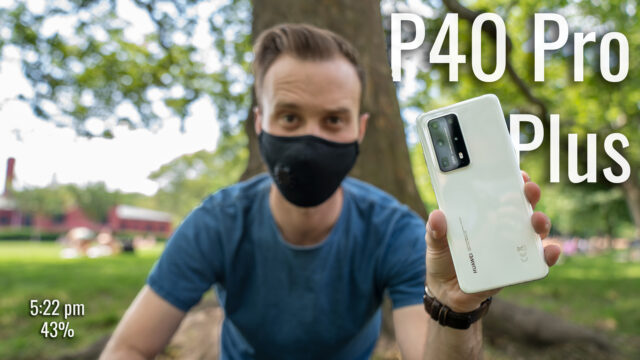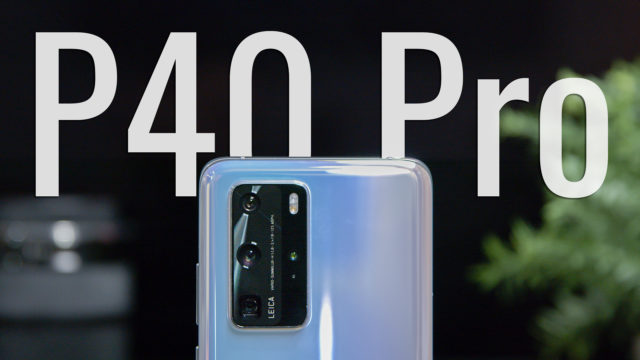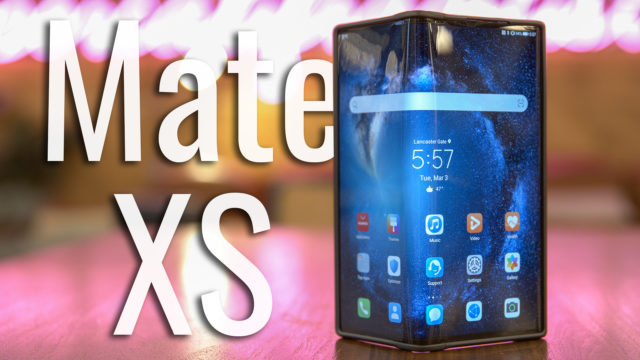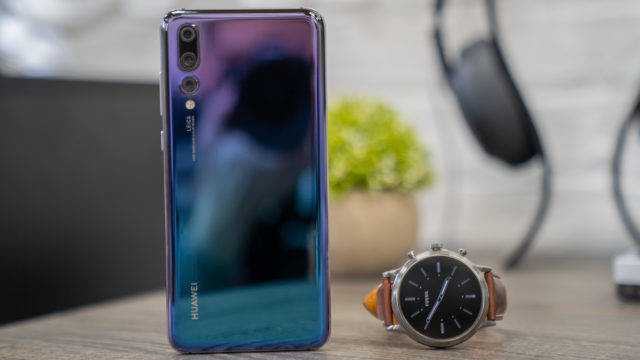Huawei Mate X Complete Walkthrough: The Better Folding Phone?
I finally got some time, very limited time mind you, but some time with the Huawei Mate X. You know, the other folding phone. The one with the arguably more useful folding form factor. Yeah, that one.
Well, I was in China on a press trip to learn more about Huawei and for a brief period, an executive let us borrow the Mate X to film and take pictures of it. If you’ve ever seen an American football game where someone fumbles the ball and everyone around it dives onto it, well that’s sort of how it goes when a company gives a room full of press a folding phone and says they need it back in an hour.
Regardless, we managed to be civil enough to allow us to each get a little time with it so I figured I’d try and do a complete walkthrough of the device while I could.
If you’re not familiar, a complete walkthrough on this channel is where I try and go through every feature I possibly can on a new device so you guys are better prepared should you be in the market to go buy one.
With that said, there is a lot to go through so let’s get started.
Firstly, I mean, it folds.

We have an 8″ AMOLED 2200×2480 display when folded out giving us an odd 8:7.1 aspect ratio (so almost a square) and when folded back we have a front 6.6″ 19.5:9 aspect ratio screen that does at least cover the majority of the display and makes it look almost similar in size/shape to a Huawei P30 Pro.
You open the screen by clicking this small button under the cameras on the back to unlock it. This button, by the way, we were told is being redesigned to be flatter so it doesn’t get pressed accidentally when the phone is laying on a desk (and is most likely going to look similar to the one that the CEO was spotted with having not too long ago).

Something else that’s a benefit of the outward bending screen besides just having a normal-looking modern phone on the front (which is great) is the fact that it also has a 6.38-inch rear screen with a 25:9 aspect ratio and 2,480 x 892 resolution.
Now, most of the time this rear screen is off by default but in some situations like when taking a photo you can turn it on to show the person in the photo the image your taking (and, of course, use that for selfies too since there are no other cameras on the Mate X). Sort of interesting to think that Huawei does at least have an option of maybe creating other use cases that that back screen could be used for in the future.
Now, even though this was a pre-production unit, it seemed pretty snappy and the software when folding and unfolding worked as well as one would expect.

The Mate X only comes in one color, Instersteller Blue, but considering most of the time you just see screen on it, it’s sort of not that important I guess.
Moving around the device really quick. We have a fingerprint sensor that doubles as a power button on the right side of the phone as well as a volume rocker.
On the left, we have the bent screen obviously, but it’s interesting to note that it does turn off this edge up to where that P30 Pro screen edge would be basically.
At the top, we have our dual SIM tray that also supports Nano Memory, Huawei’s proprietary memory format that fits in the size of a NanoSIM slot (which apparently you can buy on some Chinese websites but I have yet to see a working one personally–let me know if you guys have).
On the bottom, we have our sole speaker which sounds like this (just keep in mind it is again a pre-release model).

And we have our USB-C port that is a USB 3.1 Gen 1 port and allows for Huawei’s 55W charging that supposedly can get the 4500mah battery inside from 0-85% in about 30 mins.
It is interesting to see a 4500mah battery in here, only 300mah more than the P30 Pro and with a much larger screen but since the P30 Pro is still one of the longest-lasting phones I’ve used I’ll give them the benefit of the doubt and, as usual, will test that further in the real-world test I’ll do on the phone whenever it comes out (subscribe and turn on notifications next to the word subscribe to be notified when that and other videos go live).
There is no headphone jack but Huawei does list the USB-C port as a Type-C ear jack which is just funny.
Inside the device, it’s listed as running a Kirin 980 chipset but since it’s being reported to not come out until November it might even run whatever the newer chipset is (Kirin 990?) when it’s released.

That is paired with 8GBs of RAM and 512GBs of storage.
We also have Bluetooth 5.0, Wifi 802.11ac, Qualcomm AptX HD bluetooth streaming, LDAC, and HWA audio.
And, as you can tell by this little logo, the device will come with 5G support.
For the camera on the back, we have a slightly similar setup to the Huawei P30 Pro albeit with different aperture levels and focal lengths for some of the cameras.
We have a standard 40MP 27mm equivalent f1.8 (instead of f1.6 in the P30 Pro) that has phase detection autofocus.
We have an 8MP f2.4 (instead of the f3.4 of the P30 Pro) 56mm equivalent telephoto (about 2x zoom vs the 5x zoom of the P30 Pro).
And a 16MP (instead of 20MP on the P30 Pro) f2.2 17mm (instead of 16mm on the P30 Pro).

And lastly the same time of flight depth-sensing camera as the P30 Pro.
Regardless, the photos we were able to quickly take in the room on the pre-release software definitely reminded me of shots from the P30 Pro in terms of quality and color-science (which makes sense).
One cool difference that I already mentioned briefly is that you can use any of these cameras as your selfie camera since we can use the bent back of the screen as a viewfinder.
Now, in terms of software, it’s running the same EMUI as the P30 Pro (which will probably be on EMUI 10 when it launches) and so I won’t go into that in-depth since it’s not new. The only things I noticed that were unique to the Mate X is that selfie camera ability and the ability to use both sides of the display as a split-screen (it didn’t seem to be able to do more than two windows like the Fold can, but again all of this is pre-release software so who knows).

The device is again, now rumored for Sept or November and will cost about 2300 Euro or the equivalent of $2550. Thing is though that it will most likely launch first in China and then subsequent markets after but the US is looking like a very unlikely market to get one, of course. Also, we’re being told it will be in limited supply when it does launch (similar to the Galaxy Fold) so getting your hands on one will be not only expensive but quite difficult in all likelihood.
I will do my best to get one to at least borrow to do more videos on it when it gets closer to release if possible and personally as I already love the Fold after using that for a week, I can imagine I’ll like this one too, but let’s see how both do when we get to use them both in more real-world tests.
Sign up for my weekly email newsletter for more videos on tech!




